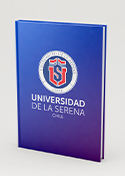Browsing by Author "Grand, R. J. J."
An ever-present Gaia snail shell triggered by a dark matter wake
(MONTHLY NOTICES OF THE ROYAL ASTRONOMICAL SOCIETY, 2023-07-04) Grand, R. J. J.; Pakmor, R.; Fragkoudi, F.; Gómez, F. A.; Trick, W.; Simpson, C. M.; van de Voort, F.; Bieri, R.
We utilize a novel numerical technique to model star formation in cosmological simulations of galaxy formation - called SUPERSTARS - to simulate a Milky Way-like galaxy with greater than or similar to 10(8) star particles to study the formation and evolution of out-of-equilibrium stellar disc structures in a full cosmological setting. In the plane defined by the coordinate and velocity perpendicular to the mid-plane [vertical phase space, (Z, V-Z)], stars in solar- like volumes at late times exhibit clear spirals qualitatively similar in shape and amplitude to the Gaia 'snail shell' phase spiral. We show that the phase spiral forms at a lookback time of similar to 6 Gyr during the pericentric passage of an similar to 10(10) M-circle dot satellite on a polar orbit. This satellite stimulates the formation of a resonant wake in the dark matter halo while losing mass at a rate of similar to 0.5-1 dex per orbit loop. The peak magnitude of the wake-induced gravitational torque at the solar radius is similar to 8 times that from the satellite, and triggers the formation of a disc warp that wraps up into a vertical phase spiral over time. As the wake decays, the phase spiral propagates several gigayears to present day and can be described as `ever-present' once stable disc evolution is established. These results suggest an alternative scenario to explain the Gaia phase spiral, which does not rely on a perturbation from bar buckling or a recent direct hit from a satellite.
Colour and infall time distributions of satellite galaxies in simulated Milky-Way analogues
(MONTHLY NOTICES OF THE ROYAL ASTRONOMICAL SOCIETY, 2023-01-09) Pan, Y.; Simpson, C. M.; Kravtsov, A.; Gómez, F. A.; Grand, R. J. J.; Marinacci, F.; Pakmor, R.; Manwadkar, V.; Esmerian, C. J.
We use the Auriga simulations to probe different satellite quenching mechanisms operating at different mass scales (10(5) M-theta ? M * < 10(11) M ((R))) in Milky Way-like hosts. Our goal is to understand the origin of the satellite colour distribution and star-forming properties in both observations and simulations. We find that the satellite populations in the Auriga simulations, which was originally designed to model Milky Way-like host galaxies, resemble the populations in the Exploration of Local VolumE Satellites (ELVES) Surv e y and the Satellites Around Galactic Analogs (SAGA) survey in their luminosity function in the luminosity range -12 ? M-V ? -15 and resemble ELVES in their quenched fraction and colour-magnitude distribution in the luminosity range -12 ? M-g ? -15. We find that satellites transition from blue colours to red colours at the luminosity range -15 ? Mg ? -12 in both the simulations and observations and we show that this shift is driven by environmental effects in the simulations. We demonstrate also that the colour distribution in both simulations and observations can be decomposed into two statistically distinct populations based on their morphological type or star-forming status that are statistically distinct. In the simulations, these two populations also have statistically distinct infall time distributions. The comparison presented here seems to indicate that this tension is resolved by the impro v ed target selection of ELVES, but there are still tensions in understanding the colours of faint galaxies, of which ELVES appears to have a significant population of faint blue satellites not reco v ered in Auriga.
